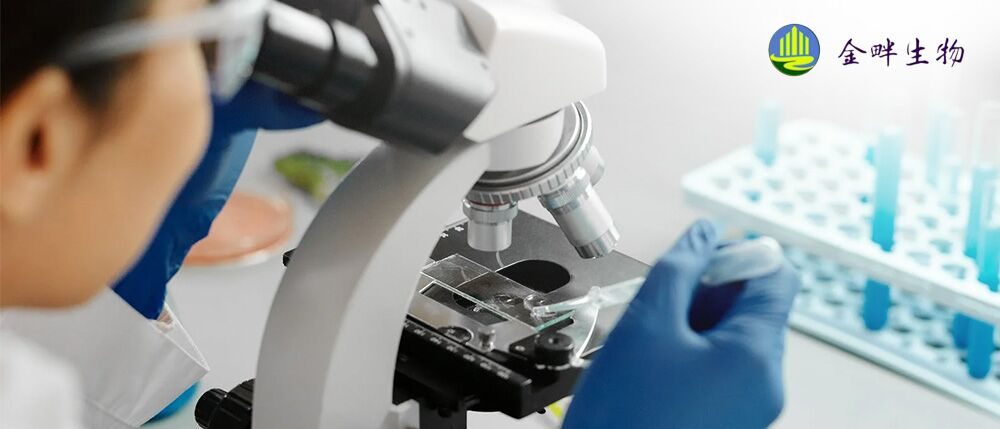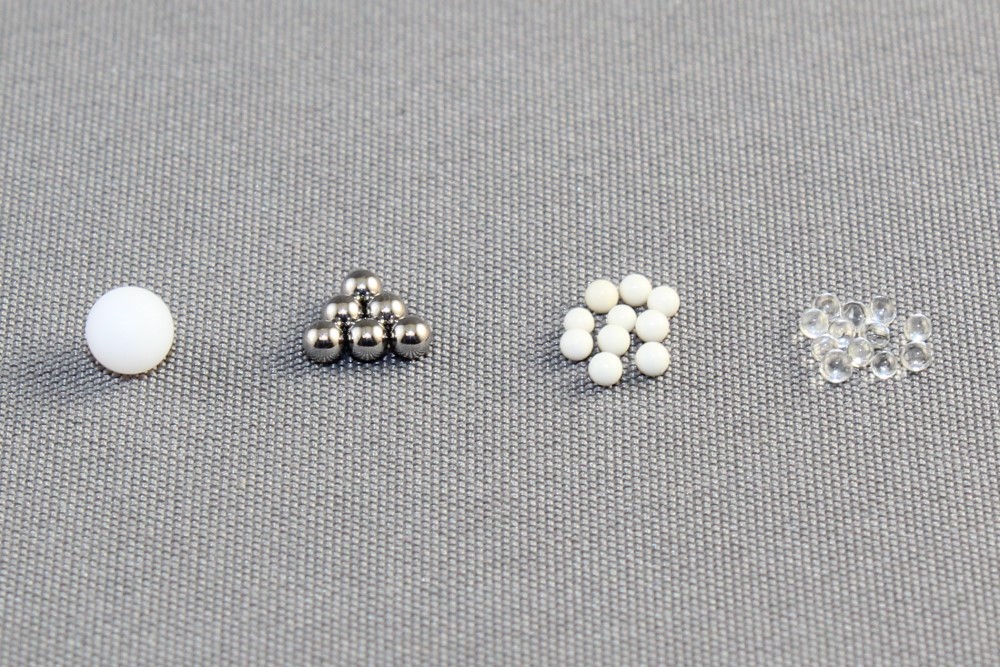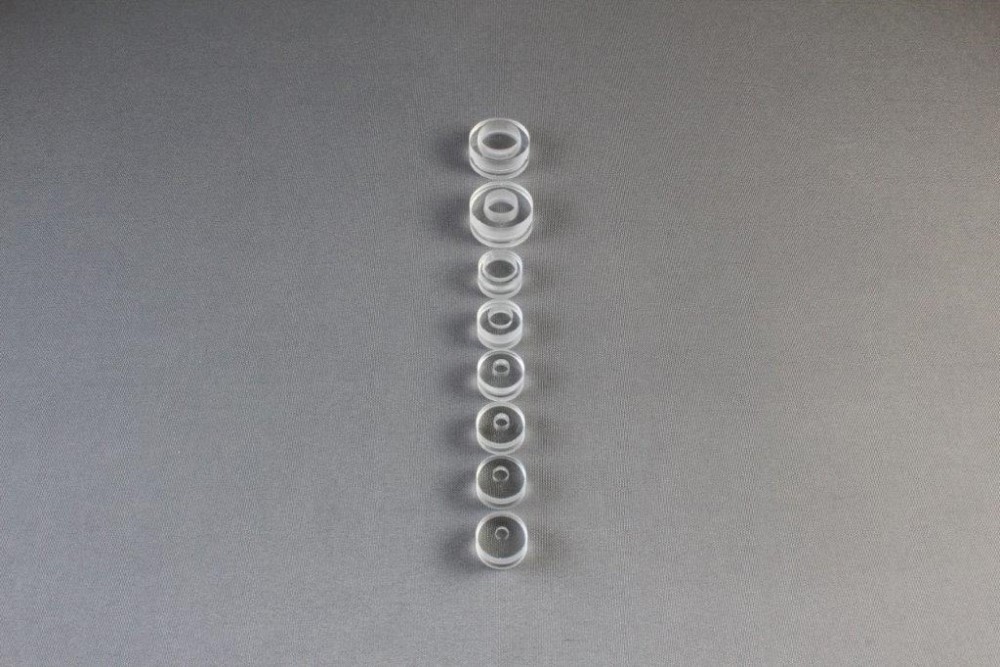| CAT NO |
NAME |
DESCRIPTION |
| HR2-406-01 |
Detergent Screen 01 (A1) 0.5ml |
10% w/v BAM |
| HR2-406-02A |
Detergent Screen 02 (A2) 0.5ml |
50.0 mM n-Dodecyl-ß-iminodipropionic acid, monosodium salt |
| HR2-406-02B |
Detergent Screen 02 (A2) 0.5ml |
0.10 mM Lauryl maltose neopentyl glycol |
| HR2-406-03 |
Detergent Screen 03 (A3) 0.5ml |
0.46 mM Dodecyltrimethylammonium chloride |
| HR2-406-04 |
Detergent Screen 04 (A4) 0.5ml |
10.0 mM CTAB |
| HR2-406-05 |
Detergent Screen 05 (A5) 0.5ml |
60.0 mM Deoxycholic acid, sodium salt |
| HR2-406-06 |
Detergent Screen 06 (A6) 0.5ml |
80.0 mM Sodium dodecyl sulfate |
| HR2-406-07 |
Detergent Screen 07 (A7) 0.5ml |
140.0 mM Sodium cholate |
| HR2-406-08 |
Detergent Screen 08 (A8) 0.5ml |
144.0 mM Sodium dodecanoyl sarcosine |
| HR2-406-09 |
Detergent Screen 09 (A9) 0.5ml |
10% w/v ANAPOE®-X-305 |
| HR2-406-10 |
Detergent Screen 10 (A10) 0.5ml |
10% w/v IPTG |
| HR2-406-11 |
Detergent Screen 11 (A11) 0.5ml |
0.006 mM n-Hexadecyl-ß-D-maltoside |
| HR2-406-12 |
Detergent Screen 12 (A12) 0.5ml |
10% w/v ANAPOE®-58 |
| HR2-406-13 |
Detergent Screen 13 (B1) 0.5ml |
0.10 mM n-Tetradecyl-ß-D-maltoside |
| HR2-406-14 |
Detergent Screen 14 (B2) 0.5ml |
10% w/v ANAPOE®-80 |
| HR2-406-15 |
Detergent Screen 15 (B3) 0.5ml |
0.33 mM n-Tridecyl-ß-D-maltoside |
| HR2-406-16 |
Detergent Screen 16 (B4) 0.5ml |
0.50 mM ANAPOE®-C12E9 |
| HR2-406-17 |
Detergent Screen 17 (B5) 0.5ml |
10% w/v ANAPOE®-20 |
| HR2-406-18 |
Detergent Screen 18 (B6) 0.5ml |
0.90 mM Thesit® |
| HR2-406-19 |
Detergent Screen 19 (B7) 0.5ml |
10% w/v ANAPOE®-35 |
| HR2-406-20 |
Detergent Screen 20 (B8) 0.5ml |
10% w/v ANAPOE®-C13E8 |
| HR2-406-21 |
Detergent Screen 21 (B9) 0.5ml |
1.1 mM ANAPOE®-C12E8 |
| HR2-406-22 |
Detergent Screen 22 (B10) 0.5ml |
1.7 mM n-Dodecyl-ß-D-maltoside |
| HR2-406-23 |
Detergent Screen 23 (B11) 0.5ml |
1.9 mM CYMAL®-7 |
| HR2-406-24 |
Detergent Screen 24 (B12) 0.5ml |
10% w/v ANAPOE®-X-114 |
| HR2-406-25 |
Detergent Screen 25 (C1) 0.5ml |
10% w/v ANAPOE®-C12E10 |
| HR2-406-26 |
Detergent Screen 26 (C2) 0.5ml |
3.0 mM Sucrose monolaurate |
| HR2-406-27 |
Detergent Screen 27 (C3) 0.5ml |
5.6 mM CYMAL®-6 |
| HR2-406-28 |
Detergent Screen 28 (C4) 0.5ml |
5.9 mM n-Undecyl-ß-D-maltoside |
| HR2-406-29 |
Detergent Screen 29 (C5) 0.5ml |
10% w/v ANAPOE®-X-405 |
| HR2-406-30 |
Detergent Screen 30 (C6) 0.5ml |
9.0 mM TRITON® X-100 |
| HR2-406-31 |
Detergent Screen 31 (C7) 0.5ml |
10% w/v ANAPOE®-C10E6 |
| HR2-406-32 |
Detergent Screen 32 (C8) 0.5ml |
9.0 mM n-Decyl-ß-D-thiomaltoside |
| HR2-406-33 |
Detergent Screen 33 (C9) 0.5ml |
10.2 mM Octyl maltoside, fluorinated |
| HR2-406-34 |
Detergent Screen 34 (C10) 0.5ml |
10% w/v ANAPOE®-C10E9 |
| HR2-406-35 |
Detergent Screen 35 (C11) 0.5ml |
14.0 mM Big CHAP, deoxy |
| HR2-406-36 |
Detergent Screen 36 (C12) 0.5ml |
18.0 mM n-Decyl-ß-D-maltoside |
| HR2-406-37 |
Detergent Screen 37 (D1) 0.5ml |
20.0 mM LDAO |
| HR2-406-38 |
Detergent Screen 38 (D2) 0.5ml |
25.0 mM n-Decanoylsucrose |
| HR2-406-39 |
Detergent Screen 39 (D3) 0.5ml |
1.5 mM n-Nonyl-ß-D-thioglucoside |
| HR2-406-40 |
Detergent Screen 40 (D4) 0.5ml |
32.0 mM n-Nonyl-ß-D-thiomaltoside |
| HR2-406-41 |
Detergent Screen 41 (D5) 0.5ml |
50.0 mM CYMAL®-5 |
| HR2-406-42 |
Detergent Screen 42 (D6) 0.5ml |
60.0 mM n-Nonyl-ß-D-maltoside |
| HR2-406-43 |
Detergent Screen 43 (D7) 0.5ml |
65.0 mM n-Nonyl-ß-D-glucoside |
| HR2-406-44 |
Detergent Screen 44 (D8) 0.5ml |
70.0 mM HEGA®-10 |
| HR2-406-45 |
Detergent Screen 45 (D9) 0.5ml |
70.0 mM MEGA-10 |
| HR2-406-46 |
Detergent Screen 46 (D10) 0.5ml |
71.0 mM C8E5 |
| HR2-406-47 |
Detergent Screen 47 (D11) 0.5ml |
76.0 mM CYMAL®-4 |
| HR2-406-48 |
Detergent Screen 48 (D12) 0.5ml |
80.0 mM C8E4 |
| HR2-406-49 |
Detergent Screen 49 (E1) 0.5ml |
85.0 mM n-Octyl-ß-D-thiomaltoside |
| HR2-406-50 |
Detergent Screen 50 (E2) 0.5ml |
90.0 mM n-Octyl-ß-D-thioglucoside |
| HR2-406-51 |
Detergent Screen 51 (E3) 0.5ml |
100.0 mM Hexaethylene glycol monooctyl ether |
| HR2-406-52 |
Detergent Screen 52 (E4) 0.5ml |
104.0 mM DDAO |
| HR2-406-53 |
Detergent Screen 53 (E5) 0.5ml |
115.0 mM C-HEGA®-11 |
| HR2-406-54 |
Detergent Screen 54 (E6) 0.5ml |
10% w/v Pluronic® F-68 |
| HR2-406-55 |
Detergent Screen 55 (E7) 0.5ml |
195.0 mM HECAMEG® |
| HR2-406-56 |
Detergent Screen 56 (E8) 0.5ml |
200.0 mM n-Octyl-ß-D-glucoside |
| HR2-406-57A |
Detergent Screen 57 (E9) 0.5ml |
244.0 mM n-Octanoylsucrose |
| HR2-406-57B |
Detergent Screen 57 (E9) 0.5ml |
250.0 mM Sulfobetaine 3-10 |
| HR2-406-58 |
Detergent Screen 58 (E10) 0.5ml |
250.0 mM MEGA-9 |
| HR2-406-59 |
Detergent Screen 59 (E11) 0.5ml |
275.0 mM 2,6-Dimethyl-4-heptyl-ß-D-maltopyranoside |
| HR2-406-60 |
Detergent Screen 60 (E12) 0.5ml |
290.0 mM n-Heptyl-ß-D-thioglucopyranoside |
| HR2-406-61 |
Detergent Screen 61 (F1) 0.5ml |
0.1% w/v n-Octyl-ß-D-galactopyranoside |
| HR2-406-62 |
Detergent Screen 62 (F2) 0.5ml |
345.0 mM CYMAL®-3 |
| HR2-406-63 |
Detergent Screen 63 (F3) 0.5ml |
350.0 mM C-HEGA®-10 |
| HR2-406-64 |
Detergent Screen 64 (F4) 0.5ml |
390.0 mM HEGA®-9 |
| HR2-406-65 |
Detergent Screen 65 (F5) 0.5ml |
400.0 mM Dimethyloctylphosphine oxide |
| HR2-406-66 |
Detergent Screen 66 (F6) 0.5ml |
790.0 mM MEGA-8 |
| HR2-406-67 |
Detergent Screen 67 (F7) 0.5ml |
1.08 M C-HEGA®-9 |
| HR2-406-68 |
Detergent Screen 68 (F8) 0.5ml |
1.09 M HEGA®-8 |
| HR2-406-69 |
Detergent Screen 69 (F9) 0.5ml |
1.20 M CYMAL®-2 |
| HR2-406-70 |
Detergent Screen 70 (F10) 0.5ml |
2.50 M n-Hexyl-ß-D-glucopyranoside |
| HR2-406-71A |
Detergent Screen 71 (F11) 0.5ml |
6.6% w/v C-HEGA®-8 |
| HR2-406-71B |
Detergent Screen 71 (F11) 0.5ml |
45 mM Tripao |
| HR2-406-72 |
Detergent Screen 72 (F12) 0.5ml |
10% w/v CYMAL®-1 |
| HR2-406-73 |
Detergent Screen 73 (G1) 0.5ml |
0.5 M NDSB-195 |
| HR2-406-74 |
Detergent Screen 74 (G2) 0.5ml |
0.5 M NDSB-201 |
| HR2-406-75 |
Detergent Screen 75 (G3) 0.5ml |
0.5 M NDSB-211 |
| HR2-406-76 |
Detergent Screen 76 (G4) 0.5ml |
0.5 M NDSB-221 |
| HR2-406-77 |
Detergent Screen 77 (G5) 0.5ml |
0.5 M NDSB-256 |
| HR2-406-78 |
Detergent Screen 78 (G6) 0.5ml |
4.0 mM ZWITTERGENT® 3-14 |
| HR2-406-79 |
Detergent Screen 79 (G7) 0.5ml |
15.0 mM n-Dodecyl-N,N-dimethylglycine |
| HR2-406-80 |
Detergent Screen 80 (G8) 0.5ml |
15.0 mM FOS-Choline®-12 |
| HR2-406-81 |
Detergent Screen 81 (G9) 0.5ml |
22.0 mM FOS-Choline®-8, fluorinated |
| HR2-406-82 |
Detergent Screen 82 (G10) 0.5ml |
32.10 mM n-Undecyl-N,N-Dimethylamine-oxide |
| HR2-406-83 |
Detergent Screen 83 (G11) 0.5ml |
40.0 mM ZWITTERGENT® 3-12 |
| HR2-406-84 |
Detergent Screen 84 (G12) 0.5ml |
43.0 mM DDMAB |
| HR2-406-85 |
Detergent Screen 85 (H1) 0.5ml |
52.5 mM FOS-MEA®-10 |
| HR2-406-86 |
Detergent Screen 86 (H2) 0.5ml |
80.0 mM CHAPS |
| HR2-406-87 |
Detergent Screen 87 (H3) 0.5ml |
80.0 mM CHAPSO |
| HR2-406-88 |
Detergent Screen 88 (H4) 0.5ml |
110.0 mM FOS-Choline®-10 |
| HR2-406-89 |
Detergent Screen 89 (H5) 0.5ml |
190.0 mM n-Decyl-N,N-dimethylglycine |
| HR2-406-90 |
Detergent Screen 90 (H6) 0.5ml |
395.0 mM FOS-Choline®-9 |
| HR2-406-91 |
Detergent Screen 91 (H7) 0.5ml |
400.0 mM ZWITTERGENT® 3-10 |
| HR2-406-92 |
Detergent Screen 92 (H8) 0.5ml |
430.0 mM CYCLOFOS™-3 |
| HR2-406-93 |
Detergent Screen 93 (H9) 0.5ml |
1.14 M FOS-Choline®-8 |
| HR2-406-94 |
Detergent Screen 94 (H10) 0.5ml |
10% w/v ZWITTERGENT® 3-08 |
| HR2-406-95 |
Detergent Screen 95 (H11) 0.5ml |
7.0 mM LysoFos™ Choline 12 |
| HR2-406-96A |
Detergent Screen 96 (H12) 0.5ml |
70.0 mM LysoFos™ Choline 10 |
| HR2-406-96B |
HR2-406-96 – Detergent Screen 96 (H12) 0.5ml |
0.36 mM LysoFos™ Choline 14 |
 Sitting drop crystallization
Sitting drop crystallization



